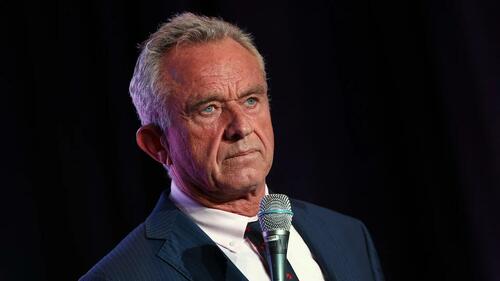EURUSD Market Sentiment Analysis: Sideways Trend and Trader Fear
Tháng 4 17, 2025GBPUSD Sentiment Analysis: Trader Positions Reveal Fear on 2025-04-17
Tháng 4 17, 2025Significant Proposed Budget Cuts and Organizational Changes in the U.S. Department of Health and Human Services (HHS)
In a shocking development, a leaked document has brought to light substantial budget cuts and organizational changes proposed for the U.S. Department of Health and Human Services (HHS). As the government gears up for fiscal year 2026, the implications of these proposed reductions and restructurings may significantly impact health programs and services across the nation.
Budget Reduction Overview
The most alarming revelation is the dramatic reduction in the HHS budget, which would see a decrease of approximately $40 billion. This reduction would bring the total budget to just over $80 billion, prompting concerns about the potential ramifications on public health services and support. As part of this sweeping approach, the National Institutes of Health (NIH)—a cornerstone institution for health research—faces an unprecedented budget cut of around 40%. The anticipated decline would reduce its funding from $47 billion to $27 billion, raising fears about the future of critical research initiatives and mobilization against emerging health threats.
The Centers for Medicare & Medicaid Services (CMS) is also set to face budgetary challenges. This shift reflects expected declines related to the expiration of enhanced premium tax credits for Affordable Care Act (ACA) subsidy provisions. Without these credits, many low-income individuals may experience heightened financial burdens, leading to adverse effects on overall health care access.
Impacts on Health Programs
One of the most pressing concerns stemming from the proposed budget cuts is the anticipated expiration of ACA subsidies, which could leave as many as 4 million Americans without health insurance coverage. This challenge underscores the intricate relationship between federal funding and accessibility to vital health care services. In addition, further strains can be expected, especially for specialized programs targeting HIV/AIDS and Lyme disease, as funding for these crucial initiatives would face substantial reductions or outright discontinuation.
Despite significant cuts to existing programs, the HHS plans to embark on new initiatives to enhance public health defenses. Notably, a collaboration with the Department of Defense to establish a biodetection system to swiftly identify pathogens is in the works. This initiative could redefine health emergency preparedness, although it raises questions about prioritization amidst budget cuts in critical areas.
Additional Organizational Changes
Beyond financial reductions, the proposed organizational changes reflect a shift in the HHS’s operational landscape. Notably, the Health Resources and Services Administration (HRSA) is slated for elimination, as its duties would be absorbed into the newly formed Administration for a Healthy America (AHA). This consolidation aims to streamline operations, yet critics contend that it risks diluting the quality of specialized health services.
Moreover, there’s a proposed pay freeze for HHS employees, which could lead to dissatisfaction and attrition among the workforce. Another significant administrative change involves a reduction in the FDA’s direct engagement in food facility inspections. Such a reduction has sparked concerns regarding food safety oversight, raising questions about the potential for increased public health risks.
Conclusion
The recent disclosures about proposed budget cuts and organizational changes within the HHS signal a potentially transformative era in American health care, marked by significant challenges. Stakeholders, health advocates, and the broader public must remain vigilant about these developments, as they could alter the landscape of health services, research funding, and regulatory effectiveness. As the fiscal implications take shape, the future of health care access and quality hangs in the balance.
In navigating these turbulent waters, ongoing dialogue among policymakers and community members will be essential to safeguard public health priorities and maintain adequate health coverage for all Americans.

